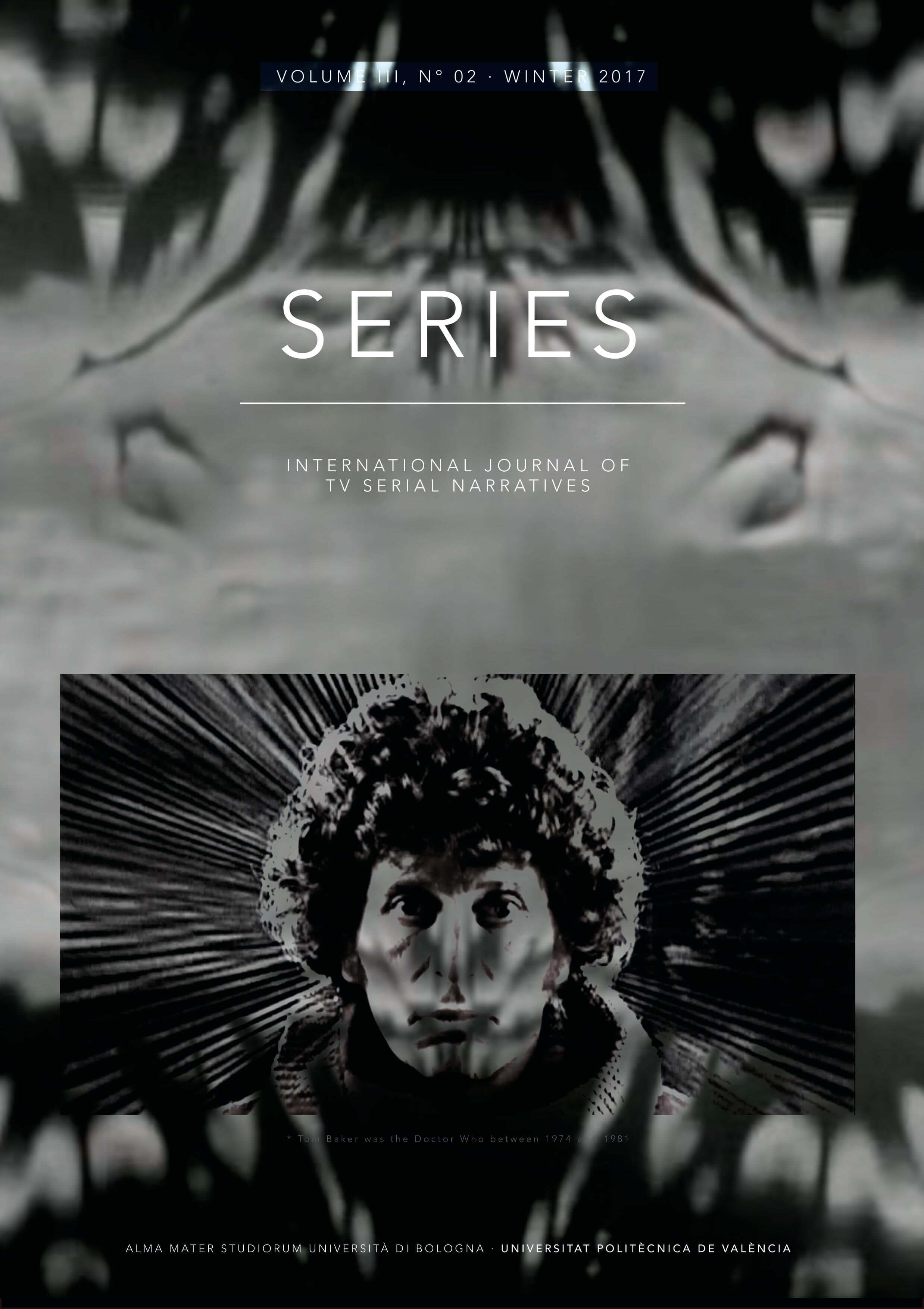Popular Culture and National Identity: A Study on University Students in Bosnia and Herzegovina Who Are “The Magnificent Century” Viewers
DOI:
https://doi.org/10.6092/issn.2421-454X/7629Keywords:
Popular Culture, National Identity, Muhteşem Yüzyıl, The Magnificent Century, Audiences, Bosnia and HerzegovinaAbstract
This paper analyses the Bosnian university students’ reactions to the Turkish TV series, Muhteşem Yüzyıl, in line with their ethnic and religious affiliations. The questions were directed to 43 university students who were the series’ audiences in Bosnia and Herzegovina, including mainly Bosniaks, Serbs and Croats, to determine their thoughts about the series. Descriptive analysis method was used in this study. As a result of the study, Croat and Serb audiences point out that they like the scenario and they expect Turkish producers to make similar series, but at the same time they emphasize on “oppressive politics” of the Ottoman Empire. A significant part of the Bosniaks says they knew the similarities between their own culture and Turkish culture in advance and their opinions regarding Turks did not change after the series. The Serbs and Croats although not using explicit praise words about Turks like the Bosniaks, they used concepts such as "family relationships", "lifestyle" and "culture" while they were talking about intercultural similarities.References
Adıyeke, Nuri (2014). “Osmanlı Millet Sistemine Dair Tartışmalar ve Siyasal Bir Uzlaşma Modeli Olarak Osmanlı Millet Sistemi.” Yeni Türkiye 60: 1-13. http://haypedia.com/makale/Osmanl%C4%B1%20Tarihi/091b33c2-5757-4541-8481-a1e0650548d9.pdf (last accessed 15-12-17).
Aydos, Serpil (2013). “Muhafazakâr Milliyetçi Muhayyilede Kanuni: Muhteşem Yüzyıl’a Yönelik Tepkilere Dair Bir Okuma.” History Studies: International Journal of History 5(1): 1–16. DOI: http://dx.doi.org/10.9737/historyS_701.
Billig, Michael (2002). Banal Milliyetçilik, Translated by Cem Şişkolar. İstanbul: Gelenek Yayıncılık.
Brown, Carl (1996). “The Backround: An Introduction.” In Imperial Legacy, edited by L. Carl Brown, 1-17. New York: Colombia University Press.
Bartulovic, Alenka ( 2006). “Nationalism in the Classroom: Narratives of the War in Bosnia-Herzegovina (1992-1995) in the History Textbooks of the Republic of Srpska”. Studies in Ethnicity and Nationalism 6(3): 51-72. DOI: 10.1111/j.1754-9469.2006.tb00098.x.
Edensor, Tim (2002). National Identitiy, Popular Culture and Everyday Life. New York: Berg.
Ebbrecht, Tobias (2007). “Docudramatizing History on TV” European Journal Of Cultural Studies 10(1): 35-53. DOI: https://doi.org/10.1177/1367549407072969.
Eker, Süer (2006). “Bosna’da Etno-Linguistik Yapı ve Türk Dili ve Kültürü Üzerine.” Milli Folklor 18(72):71-84.
Hall, Stuart (1998). “Notes on Deconstructing the Popular.” In Cultural Theory and Popular Culture: A Reader, edited by John Storey, 442-53. Athens: University of Georgia Press.
Hall, Stuart (2000). “Old and New Identities Old and New Ethnicities.” In Culture Globalization and the World System, edited by Anthony D. King, 41-69. Minneapolis: University of Minnesota Press.
Hirsch, Marianne (2001). “Surviving Images: Holocaust Photographs and the Work of Postmemory.” The Yale Journal of Criticism 14(1): 5–37. DOI: 10.1353/yale.2001.0008.
Kamiloğlu, Can (2015). “Türk Dizileri Asıl Patlamayı ABD'de Yapacak.” https://www.amerikaninsesi.com/a/turk-dizileri-asil-patlamayi-abd-de-yapacak/3017508.html (last accessed 20-09-17).
İnal, Ayşe (2010). “Anlatı Yapıları ve Televizyonun Anlatısal Potansiyeli üzerine Bir Tartışma.” In Medya’dan Söylemler, edited by Tezcan Durna, 123-45. İstanbul: Libra.
Landsberg, Alison (2004). Prosthetic Memory: The Transformation of American Remembrance in The Age of Mass Culture. New York: Colombia University Press.
Ljubojevic, Ana (2010). “Tomorrow People, Where is Your Past? Mapping of Post-Warnational Identities in new Yugoslav States.” http://www.eisa-net.org/be-bruga/eisa/files/events/stockholm/Tomorrow%20people%20where%20is%20your%20past.pdf (last accessed 06-0617).
Lopusina, Marko (2010). “View: We are all Turks now?” http://serbianna.com/analysis/archives/766 (last accessed 06-06-17).
Muhasilović, Jahja (2015). “Bosna Hersek Güncel Tarih Ders Kitaplarında Osmanlı/Türk İmajı.” MA Thesis: İstanbul: Üniversitesi Sosyal Bilimler Enstitüsü (Master Thesis). https://www.academia.edu/31425262/Bosna_Hersek_G%C3%BCncel_Tarih_Ders_Kitaplar%C4%B1nda_Osmanl%C4%B1_T%C3%BCrk_%C4%B0maj%C4%B1_-_Master_Thesis (last accessed 15-12-17).
Özdemir, Murat (2014). “Nitel Veri Analizi: Sosyal Bilimlerde Yöntembilim Sorunsalı Üzerine Bir Çalışma.” Eskişehir Osmangazi Üniversitesi Sosyal Bilimler Dergisi 11(1): 323-343.
Rusinow, Dennison (1996). “The Ottoman Legacy in Yugoslavia’s Disintegration and Civil War.” In Imperial Legacy, edited by L. Carl Brown, 78-100. New York: Colombia University Press.
Storey, John (2000). Popüler Kültür Çalışmaları. Translated by Koray Karaşahin. İstanbul: Babil Yayınları.
Smith, Anthony D. (1999). National Identity. Las Vegas: University of Nevada Press.
Todorova, Maria(1996) “The Ottoman Legacy in the Balkans.” In Imperial Legacy, edited by L. Carl Brown, 45-78. New York: Colombia University Press.
Tüzün, Selin and Aygun Sen (2014). “The Past as a Spectacle: The Magnificent Century.” In Handbook of Research on the Impact of Culture and Society on the Entertainment Industry, edited by R. Gülay Öztürk, 182-202. Hershey: IGI Global.
Wise, Laura. “Neo-Ottomanisation’ and old narratives: representing modern Turkey in the Balkans”. http://www.asfar.org.uk/neo-ottomanisation-and-old-narratives-representing-modern-turkey-in-the-balkans/ (last accessed 04-06-17).
“Turkish soap opera bringing Suleiman back from the dead.” http://www.thejournal.ie/suleiman-magnificent-ottoman-empire-tv-series-1213006-Dec2013/ (last accessed 04-06-17).
“Türk Dizilerinin Rekoru” (2014). - http://www.aljazeera.com.tr/al-jazeera-ozel/turk-dizilerinin-rekoru (last accessed 20-09-17).
TV Series cited
Binbirgece Masalları (2006-2009)
Ezel (2009-2011)
Gümüş (2005-2007)
Muhteşem Yüzyıl (2011-2014)
Downloads
Published
How to Cite
Issue
Section
License
Copyright (c) 2017 Serpil Aydos
Copyrights and publishing rights of all the texts on this journal belong to the respective authors without restrictions.
This journal is licensed under a Creative Commons Attribution 4.0 International License (full legal code).
See also our Open Access Policy.





